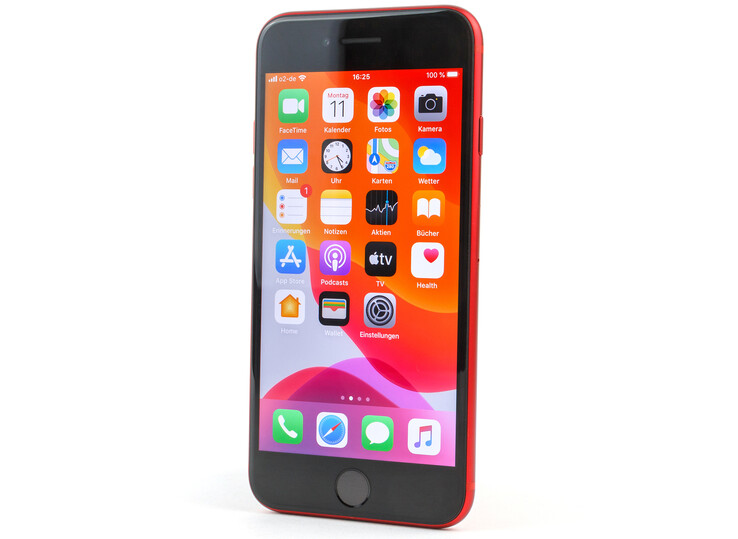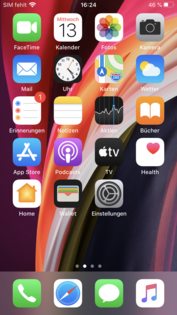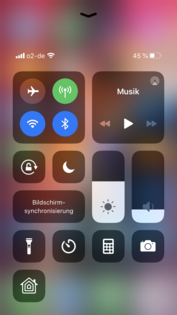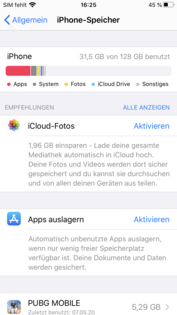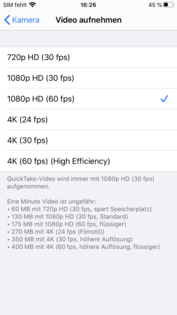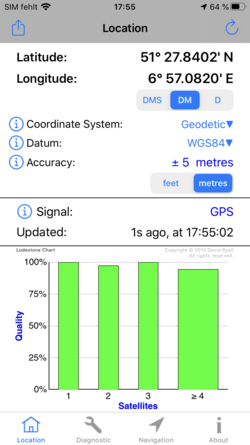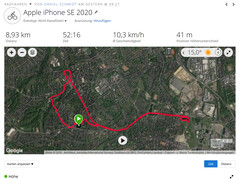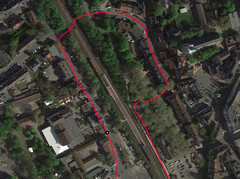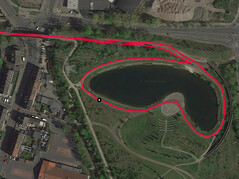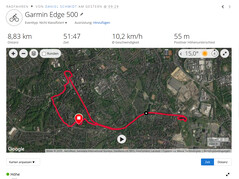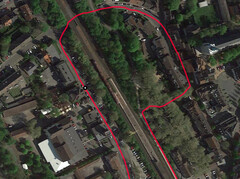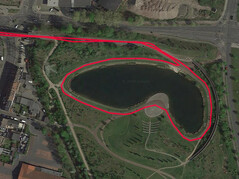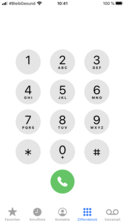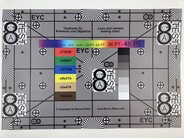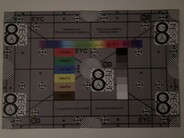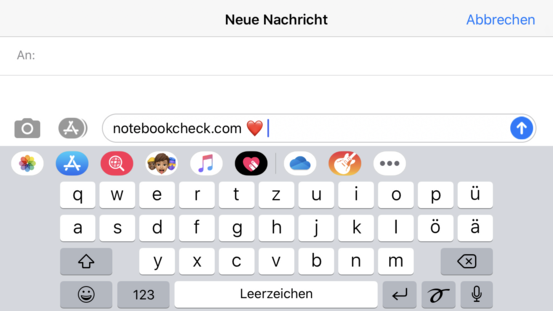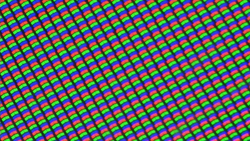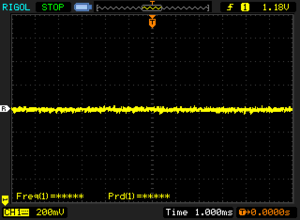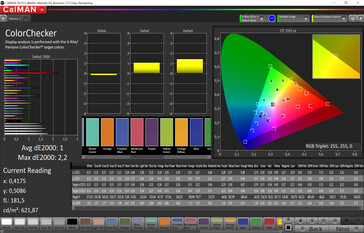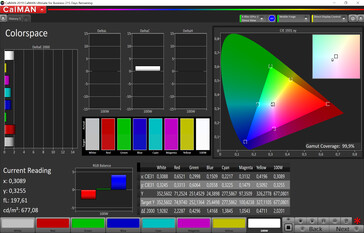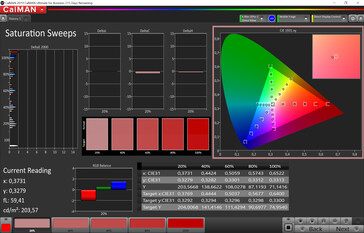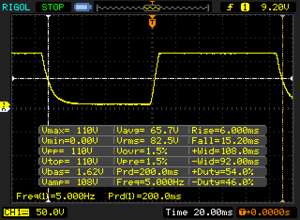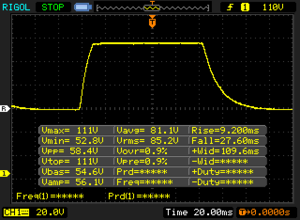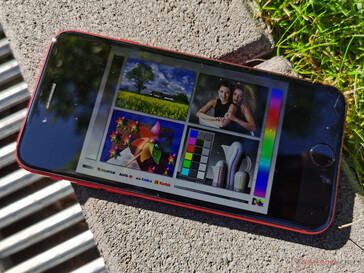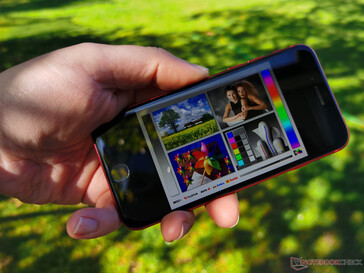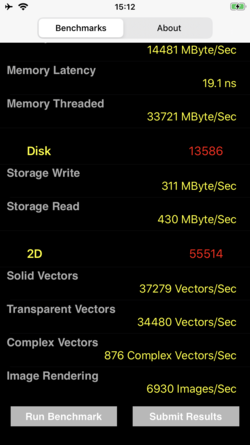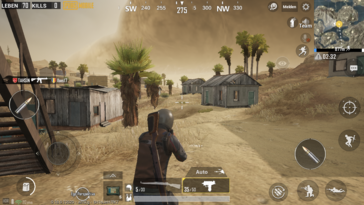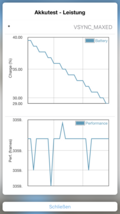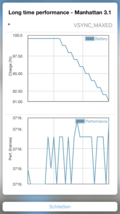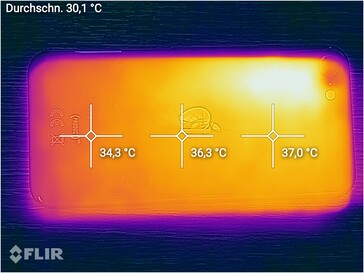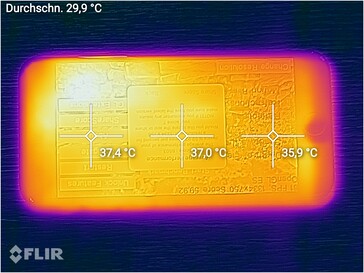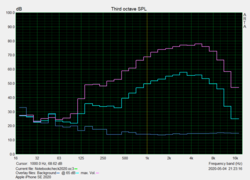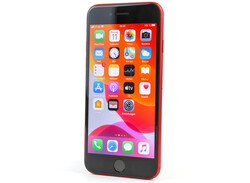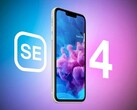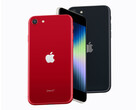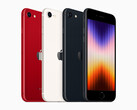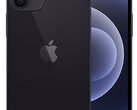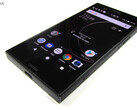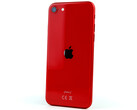Apple iPhone SE 2020 Review - Small phone with a fast-beating heart
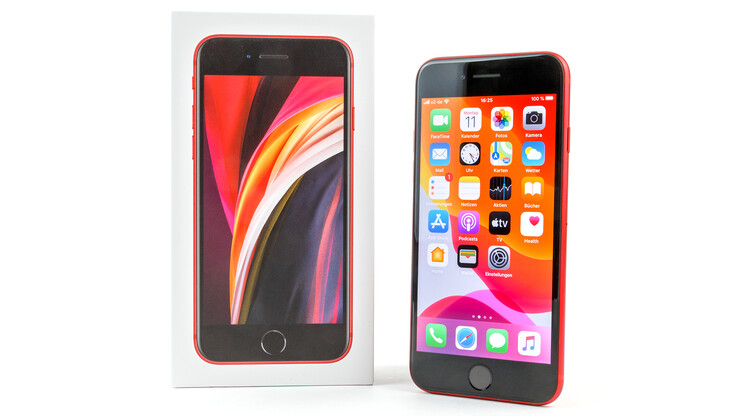
With a base price of 479 Euros ($399), the 2nd generation iPhone SE is currently the Californian company's cheapest smartphone. Configurations with 64, 128 (529 Euros/$449), or 256 GB (649 Euros/$549) of internal storage are available. The device not only supersedes its namesake from 2016 but also the iPhone 8, the design of which it has inherited.
Compared to the iPhone 8, it comes with the faster Apple A13 chip, which is one of the latest flagship SoCs, more RAM and Wi-Fi 6 support. The smartphones are very similar otherwise both in terms of the visual appearance and the specifications.
We will take a closer look at the internal differences in this review.
Competing Devices
Rating | Date | Model | Weight | Drive | Size | Resolution | Price |
|---|---|---|---|---|---|---|---|
| 85.2 % v7 (old) | 05 / 2020 | Apple iPhone SE 2020 A13 Bionic, A13 Bionic GPU | 148 g | 128 GB NVMe | 4.70" | 1334x750 | |
| 85.7 % v7 (old) | 11 / 2019 | Google Pixel 4 SD 855, Adreno 640 | 162 g | 64 GB UFS 2.1 Flash | 5.70" | 2280x1080 | |
| 86.5 % v7 (old) | 09 / 2019 | Apple iPhone 11 A13 Bionic, A13 Bionic GPU | 194 g | 64 GB SSD | 6.10" | 1792x828 | |
| 82.9 % v7 (old) | 09 / 2017 | Apple iPhone 8 A11 Bionic, A11 Bionic GPU | 148 g | Apple 256 GB (iPhone 8 / Plus) | 4.70" | 1334x750 | |
| 86 % v7 (old) | 02 / 2020 | Samsung Galaxy S10 Lite SD 855, Adreno 640 | 186 g | 128 GB UFS 3.0 Flash | 6.70" | 2400x1080 | |
| 83.8 % v7 (old) | 01 / 2020 | Xiaomi Mi Note 10 Pro SD 730G, Adreno 618 | 208 g | 256 GB UFS 2.0 Flash | 6.47" | 2340x1080 |
Case - iPhone SE Borrows its Design from the iPhone 8
The Apple iPhone SE (2020) is available in white, black or red. Visually, it is difficult to differentiate between the new SE and the iPhone 8, since even the weight and dimensions are identical. The Apple logo on the back, which has been moved to the center, is the only indication of the fact that this is a newer device.
The blend of aluminum and glass makes a very solid impression. Even under heavy pressure, the IPS display does not distort, although the smartphone audibly creaks when attempting to twist it. The clearances are very tight and even the nano-SIM slot is also completely flush with the frame of the case.
The battery of the iPhone SE is fixed and the phone is protected against dust and water as per the IP67 certification.
Features - Apple Phone with Few New Features
The iPhone SE offers few new features. The Lightning port still transfers data according to the USB 2.0 specification.
Instead of Face ID, the presumed-dead feature Touch ID has been integrated for biometric authentication. Furthermore, there is a limited-functionality NFC chip and Bluetooth 5.0. Meanwhile, the faster processor and Wi-Fi 6 are new additions.
Software - iPhone with Long Update Cycle
As of this review, the iPhone SE uses Apple iOS 13.4 with all features being available. Positive: The smartphone comes with a long period of guaranteed updates of about four to five years, provided Apple maintains its current update policy. However, there has been no official statement from the manufacturer on this matter.
Communication and GNSS - Gigabit LTE and Wi-Fi 6 for the SE 2
Ideally, the iPhone SE connects to mobile networks via LTE, in which case it is able to achieve download speeds of 1 Gb/s. Although this does not make it faster than the iPhone 8, it at least supports an additional six LTE bands, which should make it a good candidate for global use. In our test, the reception with the smartphone was nothing out of the ordinary.
When it comes to local networks, the Apple smartphone has been upgraded to support the new standard Wi-Fi 6, which allows for theoretical transfer rates of up to 1.2 Gb/s within the home network. In the test with our reference router Netgear Nighthawk AX 12, the small phone reaches fast transfer speeds, although the speeds when receiving data were somewhat underwhelming. The range is good however and up to par compared to more-expensive models.
| Networking | |
| iperf3 transmit AX12 | |
| Apple iPhone SE 2020 | |
| Google Pixel 4 | |
| Apple iPhone 11 | |
| Samsung Galaxy S10 Lite | |
| Xiaomi Mi Note 10 Pro | |
| iperf3 receive AX12 | |
| Apple iPhone SE 2020 | |
| Samsung Galaxy S10 Lite | |
| Apple iPhone 11 | |
| Google Pixel 4 | |
| Xiaomi Mi Note 10 Pro | |
Apple provides little information concerning the supported satellite systems (GNSS) of the iPhone SE. Since the datasheet only specifies "built-in GPS/GNSS", only the US standard GNSS can be taken for granted. However, it is highly likely that GLONASS, Galileo and QZSS are also supported; conversely, support for the Chinese satellite system BeiDou is an uncertainty.
We used the app GPS Diagnostic to test the signal strength. The results are excellent and solid even indoors. On a short bike ride, the iPhone SE competes against the bike computer Garmin Edge 500. At a total track distance of almost nine kilometers, the difference between the two devices only amounts to 100 meters and a glance at the route even attests to the smartphone's more precise locating capabilities.
Telephony and Call Quality
In terms of the telephony app, users receive the standard iOS features. While the call quality of our test device is satisfactory when held up against the ear, our voice sounds fairly bright and slightly nasal. The ambient noise cancelling takes quite a while to pick up on interfering sounds and is only able to dampen them after a few seconds. Even then, it does not fully filter out everything and there are occasional interruptions when transmitting speech.
While there is a noticeable echo when using the speaker, it is still suitable for use in quiet environments. Furthermore, the iPhone SE supports VoLTE and Wi-Fi calling. Dual-SIM operation can be achieved with an additional eSIM.
Cameras - Only a Single-camera Setup
The front camera once again has a resolution of 7 MP and despite identical specifications on paper, it has been visibly improved. Additionally, it supports all popular portrait modes of its bigger siblings, although the transitions between the object in focus and the background tend to be less clean compared to more-expensive iPhone models. While the image quality in daylight is good, worse lighting conditions quickly introduce noticeable image noise. Video recordings are limited to Full HD at only 30 frames per second.
The main camera captures beautiful and balanced pictures in good lighting conditions, an ultra wide-angle optics or optical zoom is not available, however. Instead, a digital zoom with an up to 5x enhancement is available and produces rather disappointing results.
Although video can also be recorded at Ultra HD with up to 60 FPS, this requires using the high efficiency format (HEIF/HEVC). However, if a better compatibility is desired, video recordings are limited to 2160p and 30 FPS. The audio (mono) quality is clear and sound is recorded very evenly from all directions.
Tests under controlled lighting conditions confirm our initial subjective impressions. The color accuracy is decent, although brown and green appear significantly brighter than they should. The representation of our test chart is balanced and sharp and even towards the edges the sharpness barely decreases.
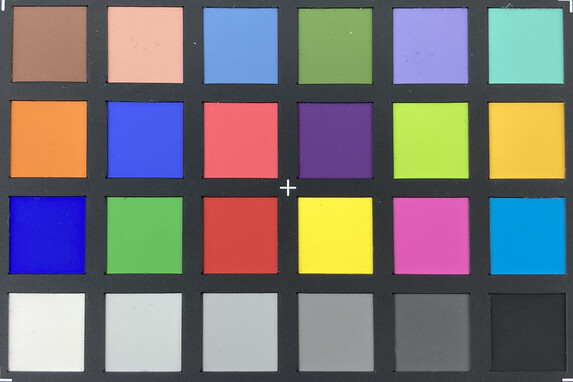

Accessories and Warranty - Quick Charger Comes at a Premium
The scope of delivery includes no surprises. Aside from the smartphone itself, there is a small 5-watt charger, a USB-to-Lightning cable, a SIM needle, obligatory Apple stickers and documentation in various languages. There are optional cases and a more powerful charger available from the manufacturer.
The warranty period is 12 months and users have the option to expand it with Apple Care+, which costs 99 Euros ($79) for the iPhone SE. The conditions are identical to those of the iPhone 11 and an accidental damage incident incurs a fee of an additional 29 or 99 Euros ($29 or $99).
Input Devices & Handling - iPhone SE without Face ID
The capacitive touchscreen of the iPhone SE (2020) is very responsive and reliable in all areas. While the preinstalled keyboard can be replaced with an alternative layout, it offers all amenities, which users have become familiar with over the years.
Since the introduction of Face ID, Apple has consistently used the new facial recognition - despite this, the presumed-dead feature Touch ID is present on this smartphone, which is likely a remnant from the design that has been adopted from the iPhone 8. The fingerprint sensor works well and reliably recognizes stored fingerprints. Since it is not affected by face masks, Touch ID may even be the more comfortable solution during the ongoing pandemic.
Display - Bright and Color-accurate IPS Panel
The display of the Apple iPhone SE (2020) measures 4.7 inches diagonally and supports a native resolution of 1334x750 pixels, which results in a clear image. On paper, the panel is identical to that of the iPhone 8, although our test shows that Apple has made small improvements to all aspects of the screen.
For example, the brightness has been increased further, it remains constant during the APL50 test and the full brightness level is available through manual mode. Similarly, a dark mode, the True Tone feature and Night Shift can be enabled. Thanks to the improved black value, the contrast ratio of the display is crisp and there is also no pulse-width modulation (PWM).
| |||||||||||||||||||||||||
Brightness Distribution: 92 %
Center on Battery: 688 cd/m²
Contrast: 2457:1 (Black: 0.28 cd/m²)
ΔE ColorChecker Calman: 1 | ∀{0.5-29.43 Ø4.78}
ΔE Greyscale Calman: 1.7 | ∀{0.09-98 Ø5}
99.9% sRGB (Calman 2D)
Gamma: 2.25
CCT: 6790 K
| Apple iPhone SE 2020 IPS, 1334x750, 4.7" | Apple iPhone 8 IPS True Tone, 1334x750, 4.7" | Apple iPhone 11 IPS, 1792x828, 6.1" | Google Pixel 4 OLED, 2280x1080, 5.7" | Samsung Galaxy S10 Lite Super AMOLED Plus, 2400x1080, 6.7" | Xiaomi Mi Note 10 Pro AMOLED, 2340x1080, 6.5" | |
|---|---|---|---|---|---|---|
| Screen | -18% | -19% | 8% | -71% | -132% | |
| Brightness middle (cd/m²) | 688 | 604 -12% | 679 -1% | 554 -19% | 622 -10% | 579 -16% |
| Brightness (cd/m²) | 659 | 580 -12% | 671 2% | 550 -17% | 630 -4% | 576 -13% |
| Brightness Distribution (%) | 92 | 91 -1% | 93 1% | 94 2% | 96 4% | 89 -3% |
| Black Level * (cd/m²) | 0.28 | 0.44 -57% | 0.68 -143% | |||
| Contrast (:1) | 2457 | 1373 -44% | 999 -59% | |||
| Colorchecker dE 2000 * | 1 | 1.2 -20% | 0.8 20% | 0.8 20% | 2.7 -170% | 4.61 -361% |
| Colorchecker dE 2000 max. * | 2.2 | 2.3 -5% | 2.4 -9% | 1.4 36% | 5.9 -168% | 7.72 -251% |
| Greyscale dE 2000 * | 1.7 | 1.6 6% | 1.1 35% | 1.3 24% | 3 -76% | 4.2 -147% |
| Gamma | 2.25 98% | 2.25 98% | 2.24 98% | 2.22 99% | 2.09 105% | 2.244 98% |
| CCT | 6790 96% | 6688 97% | 6610 98% | 6213 105% | 6246 104% | 7201 90% |
* ... smaller is better
Screen Flickering / PWM (Pulse-Width Modulation)
| Screen flickering / PWM not detected | |||
In comparison: 53 % of all tested devices do not use PWM to dim the display. If PWM was detected, an average of 8108 (minimum: 5 - maximum: 343500) Hz was measured. | |||
We performed our color analysis with the CalMAN software with the True Tone feature disabled. The DeltaE values are convincing and there are no severe outliers. Only when displaying red, the DeltaE is slightly too high, which likely stems from the fact that the panel can also display DCI-P3. However, since we were unable to measure this color space using the app, we only tested the color accuracy within the smaller sRGB color space.
The True Tone feature automatically adjusts the color representation to the ambient lighting. This often results in a warmer image, which we found to be more comfortable on the eyes during daily use and particularly in the evening.
Display Response Times
| ↔ Response Time Black to White | ||
|---|---|---|
| 21.2 ms ... rise ↗ and fall ↘ combined | ↗ 6 ms rise | |
| ↘ 15.2 ms fall | ||
| The screen shows good response rates in our tests, but may be too slow for competitive gamers. In comparison, all tested devices range from 0.1 (minimum) to 240 (maximum) ms. » 46 % of all devices are better. This means that the measured response time is similar to the average of all tested devices (20.2 ms). | ||
| ↔ Response Time 50% Grey to 80% Grey | ||
| 36.8 ms ... rise ↗ and fall ↘ combined | ↗ 9.2 ms rise | |
| ↘ 27.6 ms fall | ||
| The screen shows slow response rates in our tests and will be unsatisfactory for gamers. In comparison, all tested devices range from 0.165 (minimum) to 636 (maximum) ms. » 52 % of all devices are better. This means that the measured response time is worse than the average of all tested devices (31.6 ms). | ||
While the observed brightness of the display slightly decreases when viewed from a steep angle and the representation then appears slightly warmer, the overall image still looks excellent overall. Despite the use of IPS technology, we were unable to observe any backlight bleeding even when viewing a fully black picture.
Performance - Apple Phone with A13 Bionic and 3 GB of RAM
The iPhone SE is equipped with Apple's current top-of-the-line processor, the A13 Bionic, as well as 3 GB of RAM. The chipset promises the fastest mobile performance, which is currently available. Despite this, the benchmarks show the performance to be slower compared to Apple's 11 series.
In Geekbench, the single-core performance matches that of the iPhone 11 Pro and only the multi-core scores are slightly lower than those of the flagship smartphone. In 3DMark, this performance deficit is fairly consistent at 6 to 8% and the effects are visible in the GFXBench offscreen tests as well. However, the latter in particular shows that this is not necessarily a disadvantage during day-to-day use, since the iPhone SE is consistently at the top in terms of the onscreen results, where it even outperforms the Pro models.
Browsing the web is a very smooth experience and the benchmarks confirm this impression as well. That being said, more complex web pages can become difficult to navigate due to the smaller screen size.
We tested the speed of the internal storage using Passmark. While the write speeds match those of the iPhone 8, the read speeds are significantly lower with only around one-third of the performance of the older model. The results hint at relatively fast eMMC flash storage, although Apple does not explicitly state which type of memory is used.
Addendum 05.18.2020: The storage appears to be NVMe memory. The benchmark seems to have corrected the scores downwards by a significant margin, due to which the results can no longer be compared directly. Unfortunately, we do not have an iPhone 8 on hand to repeat the test.
| AnTuTu v8 - Total Score (sort by value) | |
| Apple iPhone SE 2020 | |
| Google Pixel 4 | |
| Samsung Galaxy S10 Lite | |
| Apple iPhone 11 Pro | |
| Average Apple A13 Bionic (489463 - 534558, n=3) | |
| Basemark GPU 1.2 | |
| 1920x1080 Metal Medium Offscreen (sort by value) | |
| Apple iPhone SE 2020 | |
| Average Apple A13 Bionic (136.6 - 153, n=2) | |
| Average of class Smartphone (251 - 319, n=3, last 2 years) | |
| Metal Medium Native (sort by value) | |
| Apple iPhone SE 2020 | |
| Average Apple A13 Bionic (94.9 - 211, n=2) | |
| Average of class Smartphone (152.9 - 245, n=3, last 2 years) | |
| Jetstream 2 - 2.0 Total Score | |
| Average of class Smartphone (23.8 - 387, n=149, last 2 years) | |
| Apple iPhone SE 2020 (Safari Mobile 13.1) | |
| Average Apple A13 Bionic (128.5 - 142.2, n=5) | |
| Apple iPhone 11 (Safari Mobile 13.0) | |
| Samsung Galaxy S10 Lite (Chrome 80) | |
| Google Pixel 4 (Chrome 78) | |
| JetStream 1.1 - Total Score | |
| Apple iPhone 11 (Safari Mobile 13.0) | |
| Average Apple A13 Bionic (279 - 302, n=5) | |
| Apple iPhone SE 2020 (Safari Mobile 13.1) | |
| Apple iPhone 8 | |
| Samsung Galaxy S10 Lite (Chrome 80) | |
| Google Pixel 4 (Chrome 78) | |
| Speedometer 2.0 - Result 2.0 | |
| Average of class Smartphone (15.2 - 643, n=122, last 2 years) | |
| Average Apple A13 Bionic (153 - 171, n=5) | |
| Apple iPhone SE 2020 (Safari Mobile 13.1) | |
| Apple iPhone 11 (Safari Mobile 13.0) | |
| Samsung Galaxy S10 Lite (Chrome 80) | |
| Google Pixel 4 (Chrome 78) | |
| WebXPRT 3 - Overall | |
| Apple iPhone 11 (Safari Mobile 13.0) | |
| Average Apple A13 Bionic (146 - 202, n=5) | |
| Average of class Smartphone (38 - 380, n=31, last 2 years) | |
| Apple iPhone SE 2020 (Safari Mobile 13.1) | |
| Samsung Galaxy S10 Lite (Chrome 80) | |
| Google Pixel 4 (Chrome 78) | |
| Octane V2 - Total Score | |
| Average of class Smartphone (2228 - 121337, n=197, last 2 years) | |
| Apple iPhone SE 2020 (Safari Mobile 13.1) | |
| Apple iPhone 11 (Safari Mobile 13.0) | |
| Average Apple A13 Bionic (47288 - 49388, n=5) | |
| Apple iPhone 8 | |
| Samsung Galaxy S10 Lite (Chrome 80) | |
| Google Pixel 4 (Chrome 78) | |
| Mozilla Kraken 1.1 - Total | |
| Samsung Galaxy S10 Lite (Chrome 80) | |
| Google Pixel 4 (Chrome 78) | |
| Average of class Smartphone (257 - 28190, n=154, last 2 years) | |
| Apple iPhone 8 | |
| Apple iPhone 11 (Safari Mobile 13.0) | |
| Average Apple A13 Bionic (545 - 573, n=5) | |
| Apple iPhone SE 2020 (Safari Mobile 13.1) | |
* ... smaller is better
Gaming - Excellent Performance, Somewhat Small Display
The Apple iPhone SE (2020) is equipped with a brand-new flagship SoC, which we benchmarked with the help of Gamebench. The results show that the frame rates remain consistent even when playing more-demanding titles such as PUBG Mobile at the highest quality settings. Since the smartphone is limited to the smaller HD resolution despite its high performance, there should be no performance issues for years to come.
The speakers produce decent audio and both the touchscreen and the gyroscope controls work well. Meanwhile, the display can feel fairly crowded in games that benefit from a wider field of view.
Emissions - The SE 2 Remains Cool Despite Warm Surfaces
Temperature
Even while idling, a few spots on the iPhone SE can feel warm to the touch and under prolonged load, the smartphone can reach up to 41.4 C. While this temperature is fairly high, it is still far from being critical.
As GFXBench's battery test illustrates, things look even better on the inside of the Apple smartphone. The iPhone SE manages to maintain a consistent 60 FPS over the entire duration of both the T-Rex test and the demanding Manhattan test.
(±) The maximum temperature on the upper side is 40.5 °C / 105 F, compared to the average of 35.2 °C / 95 F, ranging from 21.9 to 247 °C for the class Smartphone.
(±) The bottom heats up to a maximum of 41.4 °C / 107 F, compared to the average of 34 °C / 93 F
(±) In idle usage, the average temperature for the upper side is 32 °C / 90 F, compared to the device average of 32.9 °C / 91 F.
Speakers
The two speakers on the Apple iPhone SE (2020) produce a fairly decent sound, although they lack higher and lower frequencies and sound somewhat tinny at high volume levels.
For a better audio experience, users have the option to connect wired headphones to the Lightning port. While the included headset is a decent start, users will not find truly good sound here, either. Since Apple unfortunately does not include a headphone jack adapter, most users will likely rely on Bluetooth (SBC, AAC).
Apple iPhone SE 2020 audio analysis
(+) | speakers can play relatively loud (86.4 dB)
Bass 100 - 315 Hz
(-) | nearly no bass - on average 22% lower than median
(±) | linearity of bass is average (9.2% delta to prev. frequency)
Mids 400 - 2000 Hz
(±) | reduced mids - on average 6.3% lower than median
(+) | mids are linear (5.6% delta to prev. frequency)
Highs 2 - 16 kHz
(±) | higher highs - on average 8.4% higher than median
(+) | highs are linear (4.2% delta to prev. frequency)
Overall 100 - 16.000 Hz
(±) | linearity of overall sound is average (22.6% difference to median)
Compared to same class
» 48% of all tested devices in this class were better, 6% similar, 45% worse
» The best had a delta of 11%, average was 35%, worst was 134%
Compared to all devices tested
» 66% of all tested devices were better, 6% similar, 29% worse
» The best had a delta of 4%, average was 24%, worst was 134%
Apple iPhone 8 audio analysis
(±) | speaker loudness is average but good (78.4 dB)
Bass 100 - 315 Hz
(±) | reduced bass - on average 14.6% lower than median
(±) | linearity of bass is average (9.2% delta to prev. frequency)
Mids 400 - 2000 Hz
(+) | balanced mids - only 4.3% away from median
(+) | mids are linear (4.2% delta to prev. frequency)
Highs 2 - 16 kHz
(±) | higher highs - on average 5.1% higher than median
(+) | highs are linear (4.7% delta to prev. frequency)
Overall 100 - 16.000 Hz
(±) | linearity of overall sound is average (18.2% difference to median)
Compared to same class
» 17% of all tested devices in this class were better, 8% similar, 74% worse
» The best had a delta of 11%, average was 35%, worst was 134%
Compared to all devices tested
» 38% of all tested devices were better, 8% similar, 54% worse
» The best had a delta of 4%, average was 24%, worst was 134%
Energy Management - Small, Economical Phone with Wireless Charging
Energy Consumption
The iPhone SE (2020) consumes very little power and makes its competition appear like power-hungry energy monsters.
That being said, the included charger (5 watts) is an immense disappointment, since it requires more than 2 hours to fully recharge the small battery, while also being too weak to charge the iPhone at 100% load. For faster charging, an optional 18-watt charger is available. The option to charge the smartphone wirelessly is a new addition. While this option is not particularly fast, it can at least be practical in some situations.
| Off / Standby | |
| Idle | |
| Load |
|
Key:
min: | |
| Apple iPhone SE 2020 1822 mAh | Google Pixel 4 2800 mAh | Apple iPhone 11 3110 mAh | Apple iPhone 8 1821 mAh | Samsung Galaxy S10 Lite 4500 mAh | Average Apple A13 Bionic | Average of class Smartphone | |
|---|---|---|---|---|---|---|---|
| Power Consumption | -70% | -63% | -27% | -42% | -92% | -92% | |
| Idle Minimum * (Watt) | 0.44 | 1.01 -130% | 0.56 -27% | 0.54 -23% | 0.58 -32% | 0.76 ? -73% | 0.842 ? -91% |
| Idle Average * (Watt) | 1.56 | 1.63 -4% | 2.99 -92% | 1.63 -4% | 1.55 1% | 3.39 ? -117% | 1.439 ? 8% |
| Idle Maximum * (Watt) | 1.63 | 1.69 -4% | 3.02 -85% | 1.67 -2% | 1.64 -1% | 3.44 ? -111% | 1.624 ? -0% |
| Load Average * (Watt) | 2.32 | 4.67 -101% | 4.17 -80% | 2.74 -18% | 4.29 -85% | 4.66 ? -101% | 7.03 ? -203% |
| Load Maximum * (Watt) | 4.12 | 8.78 -113% | 5.44 -32% | 7.78 -89% | 8.03 -95% | 6.42 ? -56% | 11.3 ? -174% |
* ... smaller is better
Battery Life
In light of the 1822 mAh battery, the battery life is exceptional. The iPhone SE truly stands out when it comes to efficiency and the battery discharges relatively quickly only when the device is subjected to extreme loads.
Despite this, the runtimes are shorter compared to the competition, which can be traced back to the much bigger batteries of its competitors. Regardless, the battery life is more than sufficient for a full day of use.
| Apple iPhone SE 2020 1822 mAh | Google Pixel 4 2800 mAh | Apple iPhone 11 3110 mAh | Apple iPhone 8 1821 mAh | Samsung Galaxy S10 Lite 4500 mAh | Xiaomi Mi Note 10 Pro 5260 mAh | |
|---|---|---|---|---|---|---|
| Battery runtime | -16% | 56% | 3% | 44% | 59% | |
| Reader / Idle (h) | 32.3 | 16.8 -48% | 46.1 43% | 27.2 -16% | 41.7 29% | |
| H.264 (h) | 11.4 | 10.3 -10% | 19.1 68% | 11.6 2% | 19.7 73% | |
| WiFi v1.3 (h) | 11.6 | 7.7 -34% | 14.4 24% | 9.8 -16% | 13.7 18% | 18.5 59% |
| Load (h) | 2.4 | 3.1 29% | 4.5 88% | 3.4 42% | 3.7 54% |
Pros
Cons
Verdict - The iPhone 8 Refresh Was a Success, but not for Everyone
With the iPhone SE, Apple has released an attractive smartphone that shines with a fast processor, a great screen, fast Wi-Fi and a long update period. Additionally, it is waterproof and compatible with wireless charging.
The iPhone SE (2020) is currently the cheapest ticket into the Apple universe.
The biggest weaknesses are the poor screen-to-body ratio and the smaller display. However, those coming from an iPhone 6, 7, 8 or the first-generation SE likely will not find the latter to be much of an issue. This is exactly the target group of the iPhone SE2. In contrast, Android users are unlikely to be swayed due to the aforementioned drawbacks and the few possibilities in terms of the camera. For this group, the iPhone 11 will likely be a more appealing option.
The iPhone SE (2020) is a very polished piece of technology. Meanwhile, the Google Pixel 4 is the only real option for prospective buyers who are looking for an Android-based equivalent, which in this case offers a better screen-to-body ratio, a 90-Hz panel, a dual-camera setup and worse battery life at an identical price point.
Apple iPhone SE 2020
- 05/15/2020 v7 (old)
Daniel Schmidt




